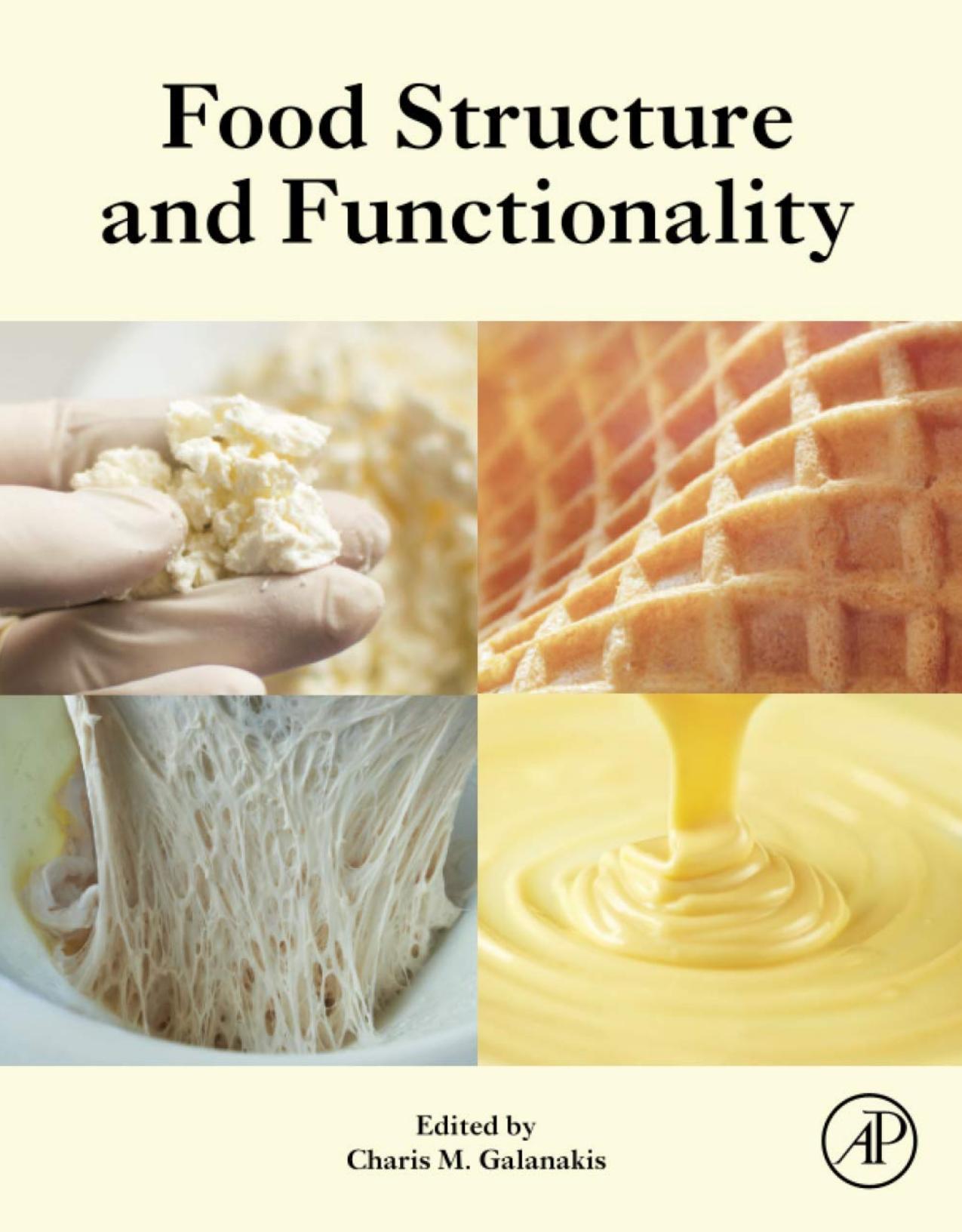Food Structure and Functionality 1st Edition by Charis Galanakis 9780128214640 0128214643
$70.00 Original price was: $70.00.$35.00Current price is: $35.00.
Instant download Food Structure and Functionality by Galanakis (1st edition) after payment
Food Structure and Functionality 1st Edition by Charis Galanakis – Ebook PDF Instant Download/Delivery: 9780128214640, 0128214643
Full dowload Food Structure and Functionality 1st Edition after payment

Product details:
• ISBN 10:0128214643
• ISBN 13:9780128214640
• Author:Charis Galanakis
Food Structure and Functionality
Food Structure and Functionality helps users further understand the latest research related to food structuring and de-structuring, with an emphasis on structuring to achieve improved texture, taste perception, health and shelf-stability. Topics covered address food structure, nanotechnology and functionality, with an emphasis on the novel experimental and modeling approaches used to link structure and functionality in food. The book also covers food structure design across the lifespan, as well as design for healthcare and medical applications. Dairy matrices for oral and gut functionality is also discussed, as is deconstructing dairy matrices for the release of nutrient and flavor components.
This book will benefit food scientists, technologists, engineers and physical chemists working in the whole food science field, new product developers, researchers, academics and professionals working in the food industry, including nutritionists, dieticians, physicians, biochemists and biophysicists.
Food Structure and Functionality 1st Table of contents:
Chapter 1. Structure and functionality of interfacial layers in food emulsions
Abstract
1.1 Introduction
1.2 Interfacial magnitudes, systems, and methodologies
1.3 Interfacial properties of food emulsifiers
1.4 Link between interfacial properties and stability of emulsions
1.5 Link between interfacial properties and digestibility of emulsions (Teresa)
1.6 Summary and future perspectives
References
Chapter 2. Rheology, structure, and sensory perception of hydrocolloids
Abstract
2.1 Introduction
2.2 Modified starch
2.3 Modified cellulose and cellulose derivatives
2.4 Guar gum
2.5 Carrageenan
2.6 Xanthan gum
2.7 Health benefits of food hydrocolloids
References
Chapter 3. Designing food structure using microfluidics
Abstract
3.1 Overview of microfluidics
3.2 Principal physics of microfluidics
3.3 Design, manufacture, and geometry of microfluidics
3.4 Microfluidics for structural assembly: examples
3.5 Food-grade materials for microfluidic processing
3.6 Challenges for the food industry and future interests
References
Chapter 4. Tailoring structure of foods using high hydrostatic pressure
Abstract
4.1 Introduction
4.2 Effects of pressure on proteins
4.3 Techno-functional properties of proteins
4.4 Conclusions
Acknowledgments
References
Chapter 5. Effects of electric fields and electromagnetic wave on food structure and functionality
Abstract
5.1 Introduction
5.2 Principal technologies
5.3 Effect of electric fields and electromagnetic radiation on proteins
5.4 Healthy issues
5.5 Future trends
References
Chapter 6. Microscopy and spectroscopy techniques applied to analyze the microstructure of food powders
Abstract
6.1 Introduction
6.2 Techniques used in the study and characterization of the powder structure
6.3 Powder microstructure: Definition and characteristics
6.4 Quality and stability of powders and their relation to the structure
6.5 Concluding remarks
Acknowledgments
Author contributions
Conflict of interest
References
Chapter 7. Formulation of lipid nanocarriers for the food bioactive ingredients
Abstract
7.1 Introduction
7.2 Solid lipid nanoparticles
7.3 Nanostructured lipid carriers
7.4 Comparison between solid lipid nanoparticles and nanostructured lipid carriers
7.5 Safety and regulations
7.6 Conclusion
References
Chapter 8. Starch modification by novel technologies and their functionality
Abstract
8.1 Introduction
8.2 Starch and their modification
8.3 Starch modification using novel technologies
8.4 Ultrasonication
8.5 High pressure treatment
8.6 Microwave radiation
8.7 Ozonation
8.8 Ohmic heating
8.9 Plasma modification
8.10 Gamma irradiation
8.11 Combined methods
8.12 Conclusion and recommendations
References
Chapter 9. Nanostructured proteins
Abstract
9.1 Fabrication of nanostructured proteins
9.2 Delivery systems with animal-based nanostructured proteins
9.3 Delivery systems with plant-based nanostructured proteins
9.4 Conclusion
References
Chapter 10. Interactions, structures, and functional properties of plant protein–polymer complexes
Abstract
10.1 Introduction
10.2 Physiochemical properties of some commonly used plant proteins
10.3 Interactions between plant proteins with other polymers
10.4 Functional properties of plant protein–polymer complexes
10.5 Applications of plant proteins in the food industry
10.6 Conclusions
References
Chapter 11. Prospects of food-derived α-glucosidase inhibitors in the management of diabetes
Abstract
11.1 Introduction
11.2 Carbohydrate control in the gastrointestinal tract
11.3 Insulin-mediated hyperglycemia
11.4 Mechanism of action of commercial α-glucosidase inhibitors
11.5 α-Glucosidase inhibitors from food sources
11.6 Conclusion and future direction
References
Chapter 12. Structure–activity relationship between food components and metabolic syndrome
Abstract
12.1 Introduction
12.2 Essential fatty acid metabolism
12.3 Lipoxins, resolvins, protectins, and maresins
12.4 Dietary protein and essential fatty acid metabolism
12.5 Adequate protein intake is needed for essential fatty acid metabolism
12.6 Angiotensin-II is pro-inflammatory and arachidonic acid, eicosapentaenoic acid, and docosahexaenoic acid are beneficial
12.7 Perinatal protein malnutrition is harmful
12.8 High-fat diet and essential fatty acid metabolism
12.9 High-carbohydrate diet and essential fatty acid metabolism
12.10 Conclusion
References
Index
People also search for Food Structure and Functionality 1st:
food structure and functionality
6th food structure and functionality symposium
5th food structure and functionality symposium
food structure and functionality forum
food structure and functionality symposium 2023


